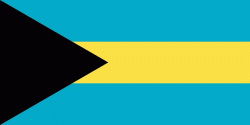Inagua
The original settlers were the Lucayan people, who arrived sometime between 500 and 800 CE, crossing in dugout canoes from Hispaniola and/or Cuba to the Bahamas.
The name Heneagua was derived from a Spanish expression meaning 'water is to be found there'. Two names of apparent Lucayan origin, Inagua (meaning "Small Eastern Island") and Baneque (meaning "Big Water Island"), were used by the Spanish to refer to Great Inagua.
Between the years of 1500 and 1825, many documented treasure laden ships were destroyed on Inaguan reefs. The two most valuable wrecks lost off the Inaguas were treasure-laden Spanish galleons: the Santa Rosa in 1599; and the Infanta in 1788. Other ships of considerable value that were wrecked there include the French Le Count De Paix in 1713, the British HMS Lowestoffe in 1801, and the British HMS Statira in 1815.
As early as the 1600s, salt was being produced and shipped to Spanish colonies, and its extraction was a going business by 1803.
Henri Christophe, king of northern Haiti from 1811 to 1820, built a summer retreat at the Northeast Point of Great Inagua. Local legend has it that he also buried a cache of gold there.
By 1918, after the end of World War I, lower salt prices and competition had driven the small producers on Great Inagua out of business, and the salt works were abandoned except for incidental local use.
In 1935, the Erickson brothers from Massachusetts founded West India Chemicals Ltd., purchasing the abandoned salt works from the British government. They drilled test holes, set up offices, and began restoration of the buildings, but the locals felt threatened, fearing changes to the power structure status quo. In August 1937, a riot broke out, an employee was killed, and the Ericksons were forced to flee. They soon returned, and full-scale development resumed.
In the mid-1950s, Morton Salt bought the Great Inagua saltworks, which includes over 80 salt ponds, now the second largest such operation in North America. Morton is the major employer on the island.
Map - Inagua
Map
Country - The_Bahamas
 |
 |
The Bahama Islands were inhabited by the Lucayans, a branch of the Arawakan-speaking Taíno, for many centuries. Christopher Columbus was the first European to see the islands, making his first landfall in the "New World" in 1492 when he landed on the island of San Salvador. Later, the Spanish shipped the native Lucayans to and enslaved them on Hispaniola, after which the Bahama islands were mostly deserted from 1513 until 1648, nearly all native Bahamians having been forcibly removed for enslavement or having died of diseases that Europeans brought to the islands. In 1649, English colonists from Bermuda, known as the Eleutheran Adventurers, settled on the island of Eleuthera.
Currency / Language
| ISO | Currency | Symbol | Significant figures |
|---|---|---|---|
| BSD | Bahamian dollar | $ | 2 |
| ISO | Language |
|---|---|
| EN | English language |















